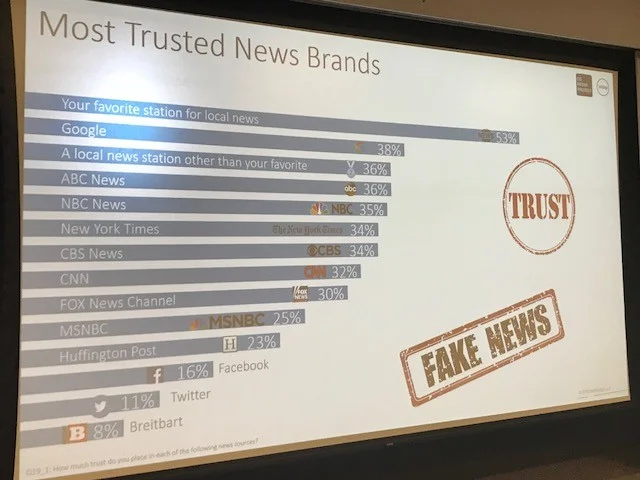Takeaways from the Colorado Media Project’s community conversation with Dr. Seth Geiger
By Andrew Elliman
Published: Aug. 17, 2018
Eight hours and 57 minutes. On a smartphone. Per day. This the average time spent among a sample of 18-24-year-old college students, according to a recent SmithGeiger study of the media consumption habits of millennials.
Screenshots were taken of their devices every 30 seconds for the duration of the trial, tracking every moment they texted in the back of class, played HQ at the dinner table, or scrolled Instagram while half-watching Netflix.* All those little moments added up to nearly nine hours per day, every day. For about 8 in 10 participants, checking their smartphone was the last thing they did when they went to sleep, and the first thing they did when they woke up. Before even brushing their teeth.
The Colorado Media Project was launched with the belief that robust local journalism is a vital component of our strength as communities. Amidst the many challenges confronting the local news business, we want to help our Colorado journalists and publications embrace and innovate around digital solutions for ensuring the next generation of audiences have the news and information they need to be active and effective citizens.
To that end, we invited international media researcher and strategist Dr. Seth Geiger, president and co-founder of SmithGeiger and a part-time Durango resident, to Colorado to provide a “reality check” on digital media consumption -- where are people across the demographic spectrum spending their valuable time? What media brands and formats are they consuming? And how does local journalism break through the static?
In two discussions on Aug. 13 -- one with media pros, and one open public forum -- Dr. Geiger explored the answers, and what they mean for Colorado newsrooms and news consumers.
Dr. Geiger has consulted digital news products for decades, dating back to work with Microsoft in the early 1990s. Since then, he has been guiding the biggest names in media and technology to navigate the “trajectory of disruption,” and look around the curve to what’s next.
Today, as the co-founder and CEO of the international research firm Smith Geiger, Dr. Geiger works with clients ranging from legacy media institutions including Disney and CNN, to their Silicon Valley disruptors, including Google, Facebook, and others. But beyond just the global powerhouses, he advises hundreds of local news outlets -- mostly television stations and networks -- on adapting their businesses for the rapidly evolving digital media landscape.
To illustrate what this new digital media landscape looks like, Dr. Geiger first established a foreground of how far we’ve come. Think back just 10 years. The iPhone was less than a year old. Only a quarter of all U.S. homes had broadband. Netflix was still something that came in the mail. Back in those days, journalism was information you sought out as part of your daily routine. The morning paper. Drive-time radio. The evening news. After a decade of accelerating change, unprecedented disruption, and ongoing reinvention, it’s safe to say those days are long gone.
Today in the new digital landscape, we may have entered a phase of “peak consumption”, where media is all around us all the time. Particularly with the advent of second screens and SVOD (streaming video on demand, i.e. Netflix, Hulu, etc.), content is ubiquitous, consumption is convenient, and the competition for attention is fierce. And make no mistake, in this attention economy, journalists are fighting for screen time. Not just amongst themselves, but with entertainment, social, ecommerce, whatever else is now accessible at the swipe of a finger. Realistically, especially on the local level, journalists too often find themselves woefully on the defensive.
Remember back to the 8 hours and 57 minutes those teens were playing on their phones? On average, just shy of 16 minutes of that time was spent consuming local journalism content. Only 3 percent. In a world where Google and Facebook have already duopolized 80-plus percent of the digital advertising market, local news organizations cannot settle to fend for those scraps without commanding higher screen share.
So that’s the bad news for local news. However as provocative as Dr. Geiger’s insights may seem, it’s not all doom-and-gloom when it comes to journalism in our communities. In fact, he revealed compelling research that local reporters wield a secret and powerful weapon in the war for our fleeting attention: trust. “Your favorite local news outlet” polls as the most trusted source for journalism, across a wide range of sources. Right there toward the bottom, edging just above Breitbart, is not surprisingly Facebook.
Where, then, can local journalism organizations leverage their trusted place in their communities to retake the screen share they’ve lost to Facebook and others?
Given how much time young people -- and increasingly people of all ages -- spend on their phone, the mobile device is without question the primary battlefield for screen share. As Dr. Geiger warns, “If you’re a newsroom and you’re not ‘mobile first’ -- at least in your philosophy if not your practices -- you’re not in the news game today.” As for what it takes to win as a “mobile first” organization, Dr. Geiger outlined six key trends in news consumption patterns to consider in rethinking journalism for the digital landscape:
Habitual to situational - Those under 40 will never develop the traditional habits of news consumption. Reading the morning paper. Listening to drive time radio. Watching evening news. To them, news is something they consume ad-hoc, in response to a specific situation. As journalists, if we’re not notifying users when news happens, and providing connections to more information, we’re not doing our job.
News cycle never ends - The flow of news is device agnostic and always plugged in. Audiences no longer have any need to seek out news. The never-ending news cycle finds them. For journalists, this requires creating “snackable content” to break through the constant noise. A quick 6-14 seconds to tell what is happening and what action should you take.
Displacement of linear versus non-linear - In other words, streaming media is taking over. Fortunately, as Netflix has clearly shown, there is a subscription model for local journalists to potentially emulate. However like Netflix, it must be a precision and personalized model. Old school depth and breadth won’t cut it anymore.
News is social - This is crucial. Social media is the catalyst that initiates the news cycle for today’s consumers. As evidence, every time Facebook makes a change to its algorithm, the effects ripple throughout the media ecosystem. That’s because it’s not enough anymore to produce static reporting. Journalists must create dynamic content that audiences want to engage with, through likes, shares, comments, and questions.
Importance of cross-platform convergence - Pretty simple. If your audience is consuming news across multiple platforms, we as journalists need to meet them where they are and produce content across multiple platforms. Not the other way around. What’s more, that content cannot be mindlessly repackaged for every medium or platform, which each has its own “rules” of style, tone, and intent.
News has a point of view - This may be the biggest adjustment for journalists to make. The role of media has fundamentally shifted from keeping audiences informed, to helping them determine where they stand, and what actions to take. Not just about things affecting me in my backyard, but also the big macro issues, i.e. climate change, poverty, clean water. Think of the Parkland kids, and how they used these new platforms to shape their own their narrative and inspire real action.
There you have it news fans. We are embarking on uncharted territory, where quality local journalism will be more important than ever before. For that invaluable civic resource to thrive into the future, journalists will need to reflect these realities in reshaping their product, process, performance, and platforms (coincidentally Dr. Geiger’s four P’s). Certainly it won’t be easy, but then again nothing worth doing is.
In that spirit, we hope that you will join us for next Wednesday’s public conversation with Molly de Aguiar, Managing Director of the News Integrity Initiative - a global coalition of journalists, technologists, academic institutions, nonprofits, funders, and other organizations fostering informed and engaged communities, combating media manipulation, and supporting inclusive, constructive, and respectful civic dialogue.
At the event, the Colorado Media Project also will be sharing progress on the rapid prototyping of digital news solutions for sustaining local journalism in our communities. Led by Cultivo Media, a startup founded by students at Denver University’s Ritchie School of Computer Science and Engineering, we’ve been conducting empathy interviews with news consumers of all demographic backgrounds from throughout the state. Informed by data-driven analyses of their preferences and behaviors, Cultivo has created and tested four prototype digital products, which incorporate many of the aforementioned best practices discussed by Dr. Geiger. Please stay tuned to this blog, our newsletter, and social channels for more information!
The Colorado Media Project would like to extend our sincere thanks to Laura Frank, Vice President of Journalism at Rocky Mountain PBS, which hosted our journalist workshop with Dr. Geiger. Serving 87,000 subscribers across the state, Rocky Mountain PBS passionately believes in the importance of collaboration as a means to strengthening our local journalism ecosystem. Huge thanks also to Tony Shawcross, Executive Director of Open Media Foundation and the Colorado Media Alliance, which co-presented the workshop for journalists.
And finally, thanks to Dr. Geiger for sharing his wisdom during this generous pro-bono trip to Denver, and his colleague Mark Briggs, the VP of Digital Innovation at SmithGeiger, for his actionable advice on tools and strategies for engaging digital citizens. For those interested in more detail, we plan to share both presentations materials shortly in the “Resources” section of the Colorado Media Project website.
With that, we leave you with one last principle from Dr. Geiger to guide you forward. Something he picked up from Google, which presumably knows a thing or two about digital media:
“We as journalists want to be in the toothbrush business. Unless it’s something our audiences are consuming twice a day, then we should think hard about whether we want to produce it for them.”
That reminds us. Before you check your phone that one last time, please don’t forget to brush your teeth.
Footnote:
* Before you ask why anybody would subject themselves to this suspension of privacy, because they got paid $400. Also, if you’re suspicious that subjects would somehow self-censor their usage under surveillance, Dr. Geiger reports that the uninterrupted volume of Tinder activity his research team observed suggests otherwise.





